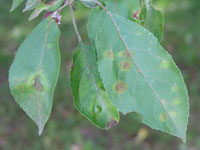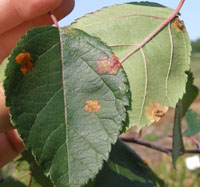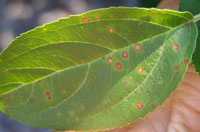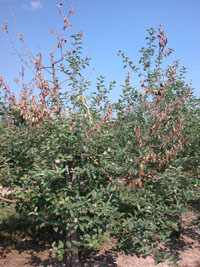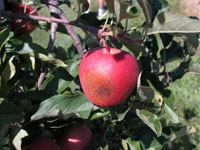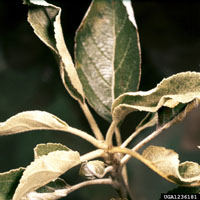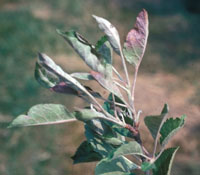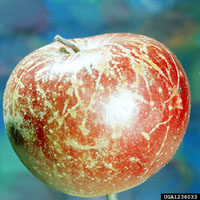Extension > Garden > Diagnose a problem > What's wrong with my plant? > Fruit > Apple > Spots on leaves
Apples > Leaves > Spots on leaves
1 of 4
Apple Scab
Venturia inaequalis
- Olive green to brown leaf spots with an irregular or feathered edge
- Leaf spots become dark brown to black with age
- Brown raised corky spots on fruit
- Severely infected fruit may be deformed and cracked
- More information on Apple Scab
2 of 4
Cedar-Apple Rust
Gymnosporangium juniperi-virginiana
- Leaves develop yellow, then bright orange spots with a red border
- Small raised black dots may be present on the upper side of leaf spots, fringed tubes may be seen on the underside of the leaf spots
- Rough green to brown irregular spots on fruit, do not extend deep into the fruit
- Juniper bushes have brown 1/4 – 1 inch round woody galls, that produce bright orange tentacles in wet spring weather
- More information on Cedar-Apple Rust
3 of 4
Black Rot
Botryosphaeria obtusa
- Round leaf spots with a purple border and tan center
- Large brown spots with brown rings form on fruit
- Fruit is rotted but remains firm
- Fruit may become mummified and remain on tree
- Branch cankers can be sunken, reddish brown or rough looking or cracked bark; cankers may remain small or enlarge to become several feet long
- Leaves on girdled branches wilt, die and turn brown
- Common on stressed trees and trees infected with fire blight
- More information on Black Rot
4 of 4
Powdery Mildew
Podosphaera leucotricha
- Part or all of infected leaves are covered in white-gray, felt-like patches
- Infected leaves will curl, twist, or fold upward
- Infected blossoms are distorted, discolored, and covered in white powdery fungal growth
- Infected fruit have bronze, corky streaks, that are skin deep
- More information on Powdery Mildew



